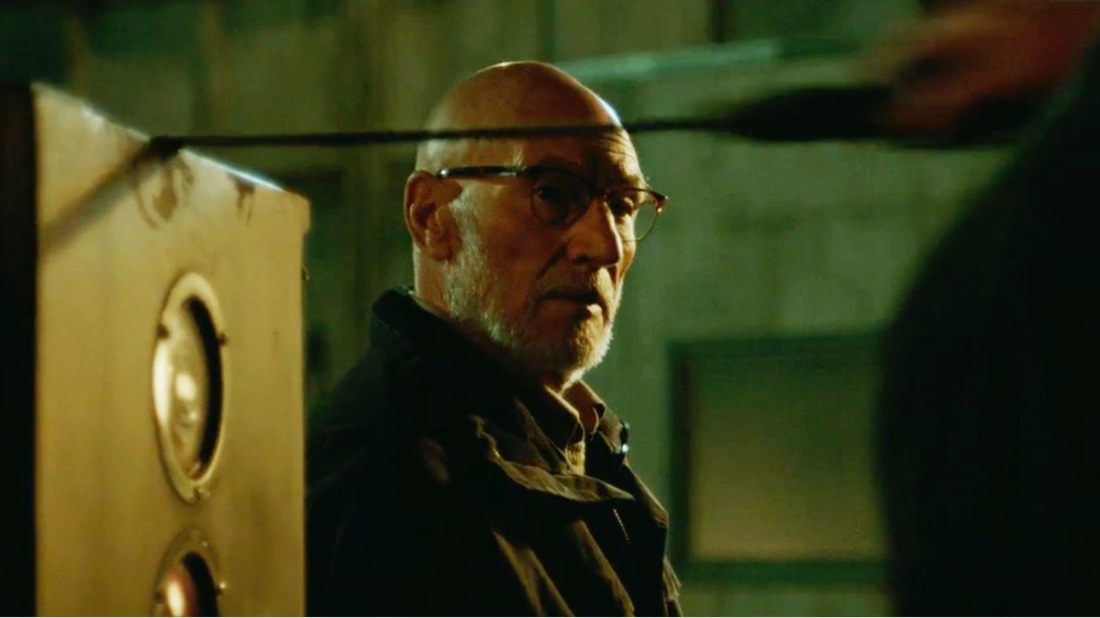What follows is a quickly escalating stand-off swimming in blood and gore. Where only a few minutes earlier, Saulnier was depicting one of those ecstatic musical performances where the audience and the band lose themselves in symphonic symbiosis, a sharp turn to ugliness now awaits. Like in Blue Ruin, Saulnier's interest in the resilience and fragility of the human body is on full display, as he dares the audience to hold focus on anatomically correct injuries.
The band members react appropriately with disbelief that this is happening, while for the Nazi's, this seems like another day at the office, thus adding to their menace. At the center of it is Stewart's Darcy, an intimidating figure who draws people in with the softness of his voice, someone whose orders are followed despite the volume with which he delivers them. Blair's Gabe is the lone villain who doesn't seem villainous. Instead, like his character in Blue Ruin, he seems trapped between his present circumstances and a more pleasant alternative that includes less body disposal.
When a film like Green Room so clearly strives for realism in its approach to violence, it makes the errors stick out all the more. The film does engage in a grotesque injury that doesn't make a lot of impact on the rest of the character's time onscreen, and therefore undercuts what otherwise felt very real. The money shot is the ravaged arm, and then Saulnier kind of forgets about the ramifications of it. It brought me out of the film in what, for the most part, is an intense experience that grabs onto the viewer and doesn't let go. Saulnier continues to make a name for himself with bigger names and a bigger budget, bringing body horror and the rural boondocks to a wider and wider audience. B

 RSS Feed
RSS Feed